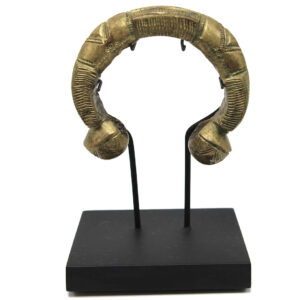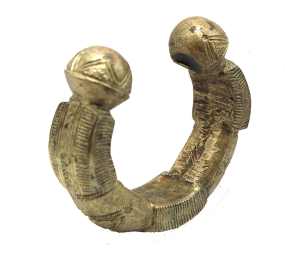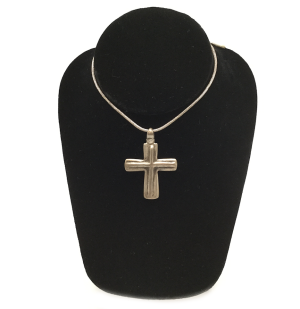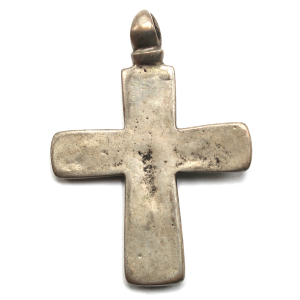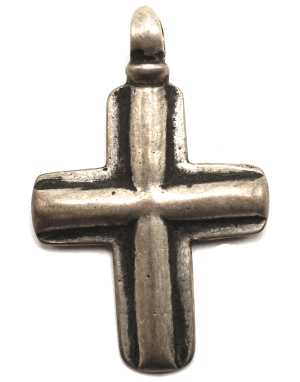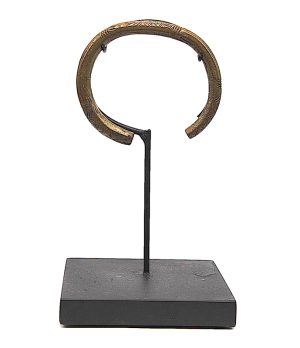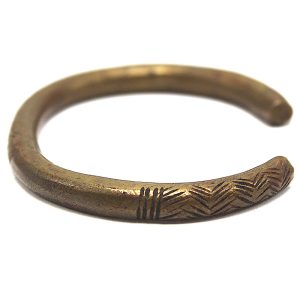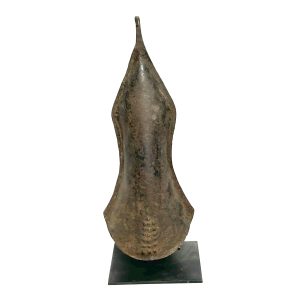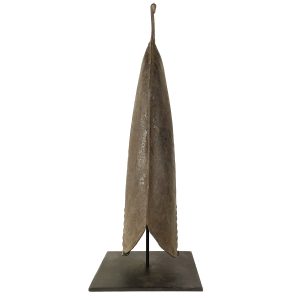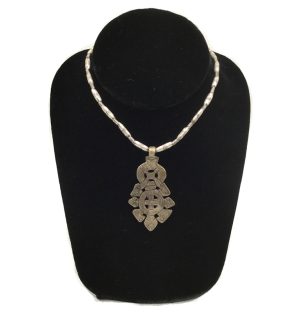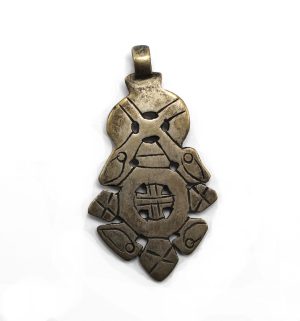-
Sale!


$295.00 Original price was: $295.00.$225.00Current price is: $225.00.
H: 3.125″ W: 3.125″ D: 0.75″ | FREE SHIPPING WITHIN CONTINENTAL US.
Tuareg horseshoe-shaped manilla with bold hammered and incised decorative motifs unique to individual Tuareg tribes Divided in sections, with etched designs, circular cutouts, ending knot finials. .
-
Sale!


$175.00 Original price was: $175.00.$150.00Current price is: $150.00.
Ht: 2.125″ W: 1.5″ | FREE SHIPPING WITHIN CONTINENTAL U.S.
Elegant Ethiopian Latin Cross with a raised rounded cross in center. Soft edges and matted surface from wear impart feeling of grace and warmth. Made using lost-wax, it is one-of-a-kind. Chain not included.
-
Sale!


$175.00 Original price was: $175.00.$150.00Current price is: $150.00.
Ht: 2.375 W: 1.5″ | FREE SHIPPING WITHIN CONTINENTAL U.S.
Simple Latin cross surmounted by a raised rounded cross in the center. Although it is heavy with a distinct and massive feel, its soft edges and matted surface impart a feeling of grace and warmth. Unadorned Latin crosses are relatively rare.
-


$110.00
SOLD
Manillas were commonly used by the Yoruba in the Coastal regions of Nigeria and along the Niger River. This thin simple round C-shaped manilla is decorated with incised linear designs on the outer round surface: it is centered on the top with parallel zig zag lines between a set of four parallel indentations which frame it. Each end also has zig zag indented striations. Simple, yet elegant, the bracelet is in very good condition, with normal wear, and pitting that verify its age and use. It comes with a wood metal stand.
-


$395.00
H: 21″ W: 8″ D: 4.75″ | FOR SHIPPING INFORMATION CONTACT US AT 213-568-3030
This traditional African hammered iron gong is elegantly shaped like a flaring bell. Heat riveted, a forging process joining two metal pieces together, it was made by Congolese tribal people. Made with 5 parallel lines of 5 decorative round bulges on both sides, it was often held using a raffia handle and beaten using sticks covered with rubber at its end. Originally a ritual instrument, they were also beaten to call members of special restricted societies to meetings and were a symbol of wealth, prestige, and influence.
-
Sale!


$135.00 Original price was: $135.00.$115.00Current price is: $115.00.
Ht: 2.375″ W: 1.625″ | FREE SHIPPING WITHIN CONTINENTAL U.S.
Cross pendant with a circle with pierced design on top and circle image below surrounding a Latin cross. The 4 birds transform the Cross into the Tree of Life and also symbolize the Holy ghost. A group of four doves represents peace.
End of content
End of content

